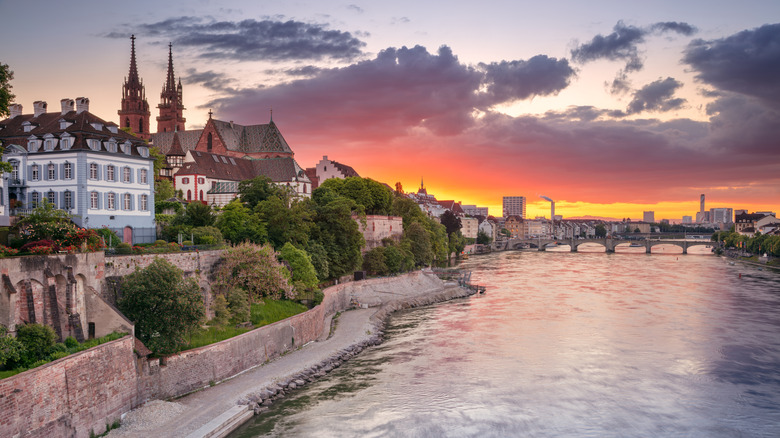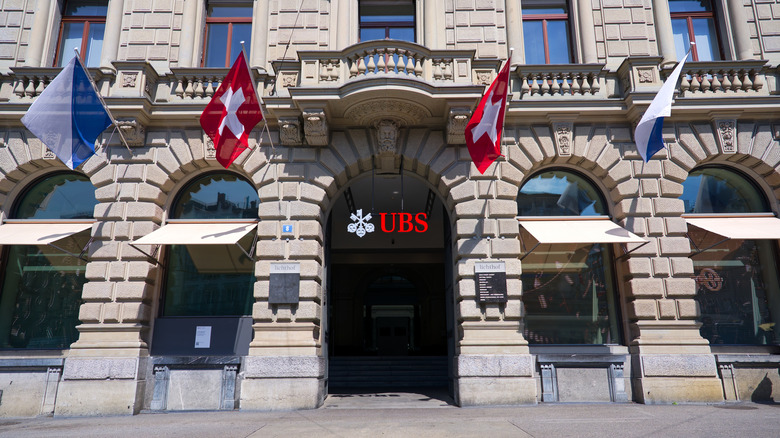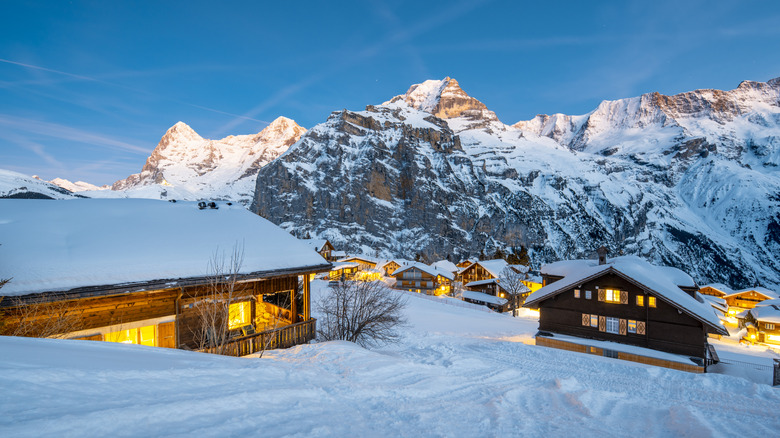The Most Expensive European Country Is Known For Its Fine Chocolate
We may receive a commission on purchases made from links.
Switzerland is not just one of the most beautiful places in Europe to find yourself in –- it is also the most expensive. Outside of Scandinavia, which is Europe's most expensive region to visit, Switzerland has the highest cost of living in Europe. EuroNews reported that, of 36 countries surveyed in 2024, Switzerland was the most costly place to live due to prices that are 84% higher than the European Union (EU) average. This also means that Switzerland can be expensive for visitors.
The country is known for world-class cheese and delicious chocolate, but experiencing those delights will cost you significantly more than in other countries around Europe. As the FoodDrinkTalk points out, there is only a small quantity of land available for agriculture in Switzerland, due in large part to the fact that 70% of the country is covered by mountains. This means that the Swiss tend to import most of their food, which adds to the price tag. As The Broke Backpacker relayed in 2023, the cost of eating out at restaurants can range anywhere from $30 to $130 or more per meal, not to mention grocery prices — like $7 for a 100g chocolate bar or $12.94 for a pound of cheese. Even a McDonald's Big Mac is known for being the priciest in the world when you buy one in Switzerland.
The cost of fun and transportation when visiting Switzerland
According to the Metropolitan Transportation Commission, more than 21% of all trips in Switzerland can be completed via public transportation, and 50% or more trips across major cities. Swiss buses, trams, and trains tend to cost about 2.50 to 4.50 CHF per ride or $3.10 to $5.58, depending on what zone you are going to and from. Many cities also offer day passes averaging about $9.92 to $12.39. Plus, the Swiss Half Fare Card is offered exclusively to overseas visitors and is valid for 30 days, costing about $148.45. With it, you can save nearly 50% on all public transportation in over 90 cities and towns including a majority of mountain railways. Or, if you are hoping to get a rental car, make sure you have a big budget to do so. Lost In Switzerland notes that visitors should expect to pay between $37.17 to $80.53 a day for a smaller vehicle, $86.72 to $148.66 for a midsize car, or anywhere from $185.83 to $247.77 each day for a luxury car or SUV during peak season.
As for attractions, costs can largely depend on where you are visiting. Cheaper excursions include hiking through the Glacier Canyon at Grindelwald for just $15 per person or a tour at the Lindt Home of Chocolate for $18 per person. Or, for those with a bigger budget, private day trip excursions from Zurich to places like Lauterbrunnen and Mürren start at around $1,340 per person on sites like Viator.
Swiss accommodations on a budget
Per Kayak, the average price range of a hotel room in Switzerland can be anywhere from $438 to $457 a night depending on if it is a weekday or weekend booking. If that cost makes your jaw drop, fear not, since there are still ways to plan a more affordable trip to Switzerland. Start by looking for lodging in more unexpected accommodations, such as staying at The Benedictine Convent of St Johann in Müstair, which has prices starting around $75 for a room. Or, consider staying in the Alps, at a Swiss Alpine Club hut that generally costs $31 and $56 per night, according to MySwitzerland.com
The Ordinary Traveler recommends that the best time of year to visit Switzerland is between April and June in the spring/summer season, as well as from September to October in the fall when you can often get the lowest rates with the nicest weather conditions.


